As the northernmost section of Valencia’s old town, El Carmen is not only one of the old town’s oldest sections, but also its most bohemian. These two qualities combine to also make it the most authentic and intriguing, with a plethora of esoteric museums, boutique shopping and fantastic tapas and paella restaurants crammed into its narrow maze of streets.
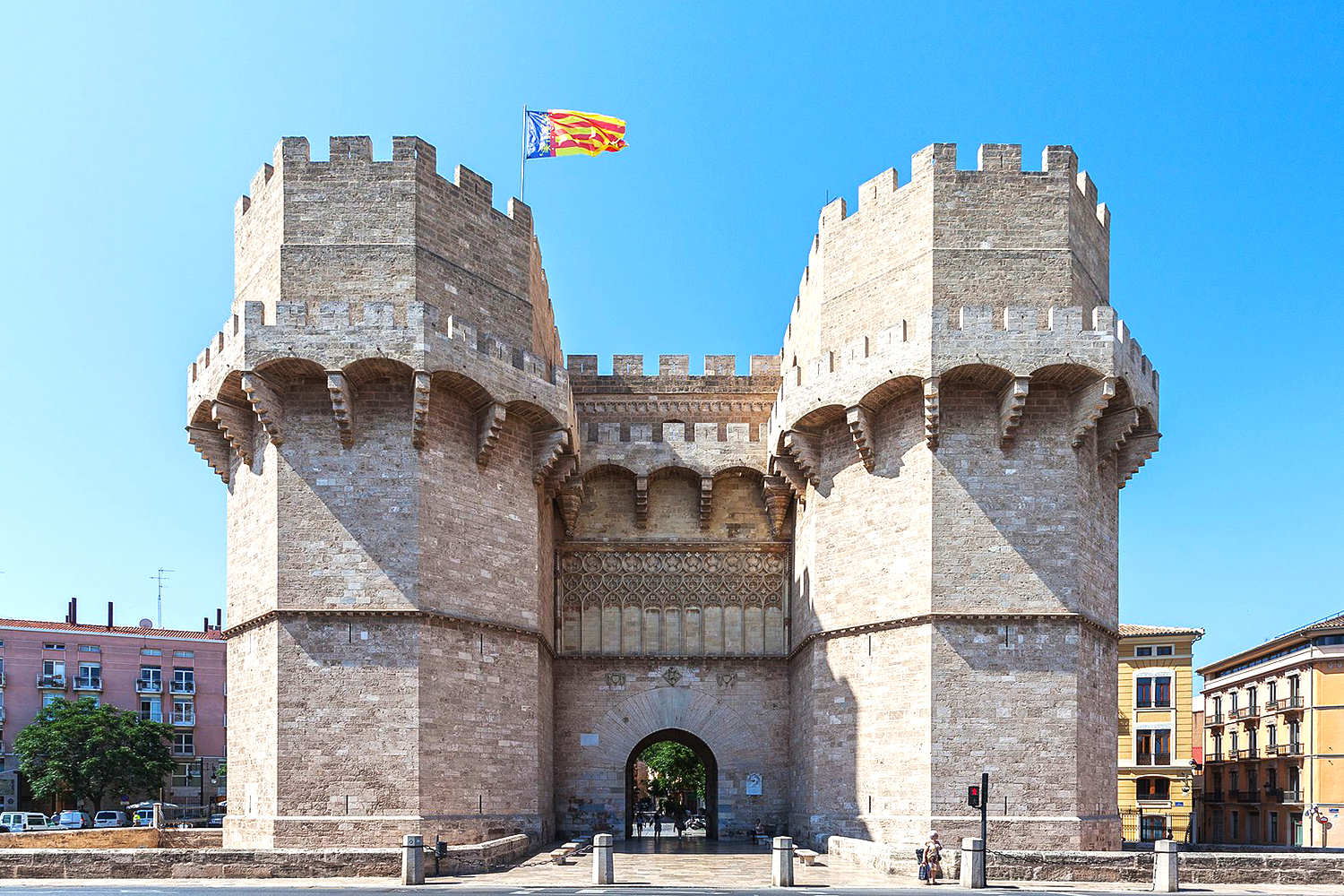
Torres de Serranos in El Carmen (Photo: Diego Delso via Wikimedia / CC BY-SA 4.0)
Narrow, cobbled streets lead off at varying angles. Take any one of them and you’re likely to have lost your bearings in a couple of minutes. Ornate lamps hang over the street in wrought black iron. Posters for live concerts plaster the walls in places. Elsewhere murals add an injection of colour and character. Many of the buildings that are untouched by this urban décor are steeped in sun-kissed history. This is Valencia’s El Carmen (known locally as Barrio del Carmen) district.
Conquests and Reconquests
Before there was El Carmen, there was a small Roman settlement called Valentia. Founded in around 138CE, it would have only been a small town. Today, much of the early city’s original foundations have been preserved beneath the current urban configuration. You can see the foundations of this city in a couple of places around the area, including the impressive Museo de la Almonia, which is just to the east of El Carmen.
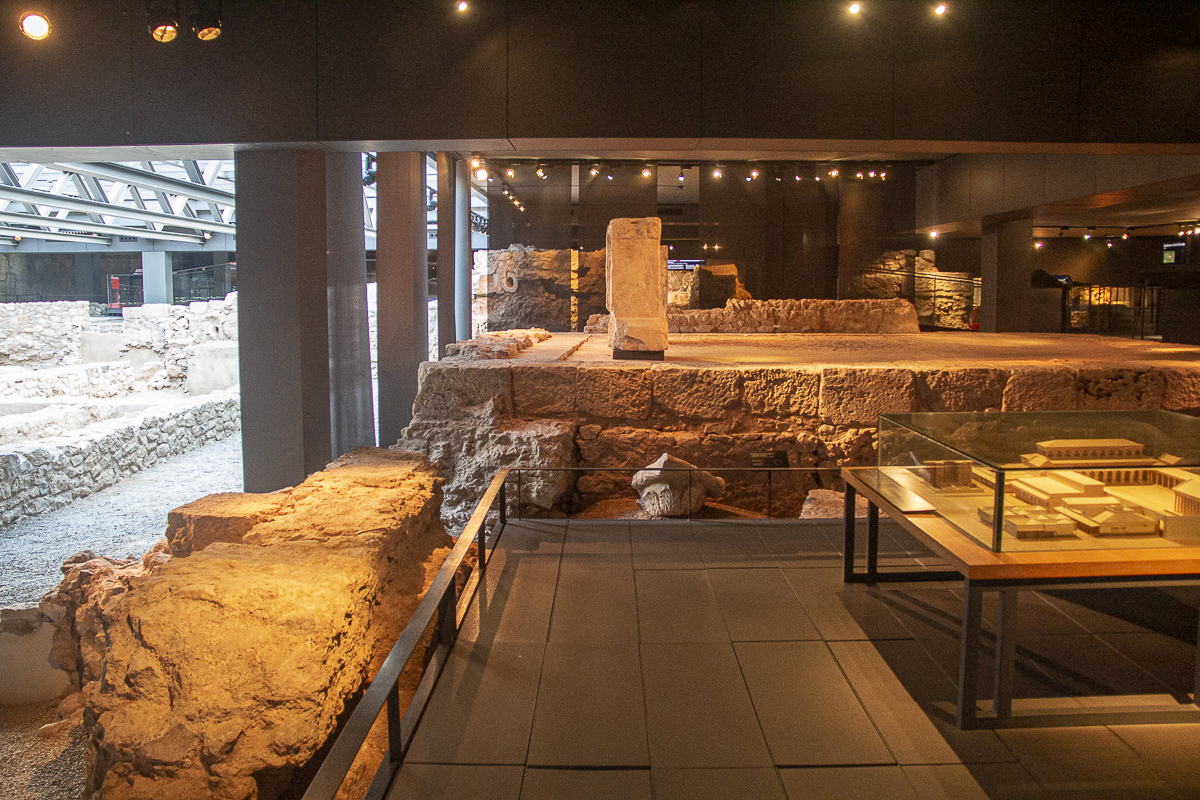
Roman ruins beneath Valencia’s old city (Photo: Paul Stafford)
If Roman architecture is a draw, it’s the Arabic influence that is most impressively showcased in the streets of El Carmen. The arrival of the Moors in the 8th century ushered in a period in which the city really started to grow in terms of size and importance. And that era’s significance is not overlooked in this part of the city. From the ancient archways, above which sit homes, overlooking the streets, to the chunk of original Arabic wall, that is unceremoniously protected, its lower reaches doused in poor quality, meaningless graffiti that won’t last a fraction of the time the structure has survived.
In fact, it’s difficult to imagine El Carmen without its Arabic influence, so deeply ingrained is it in the meandering, compact streets. But Valencia is rather fortunate in that its annals of history are dominated by just a few powers that held on for centuries, thus each leaving an indelible mark on the architecture and layout.
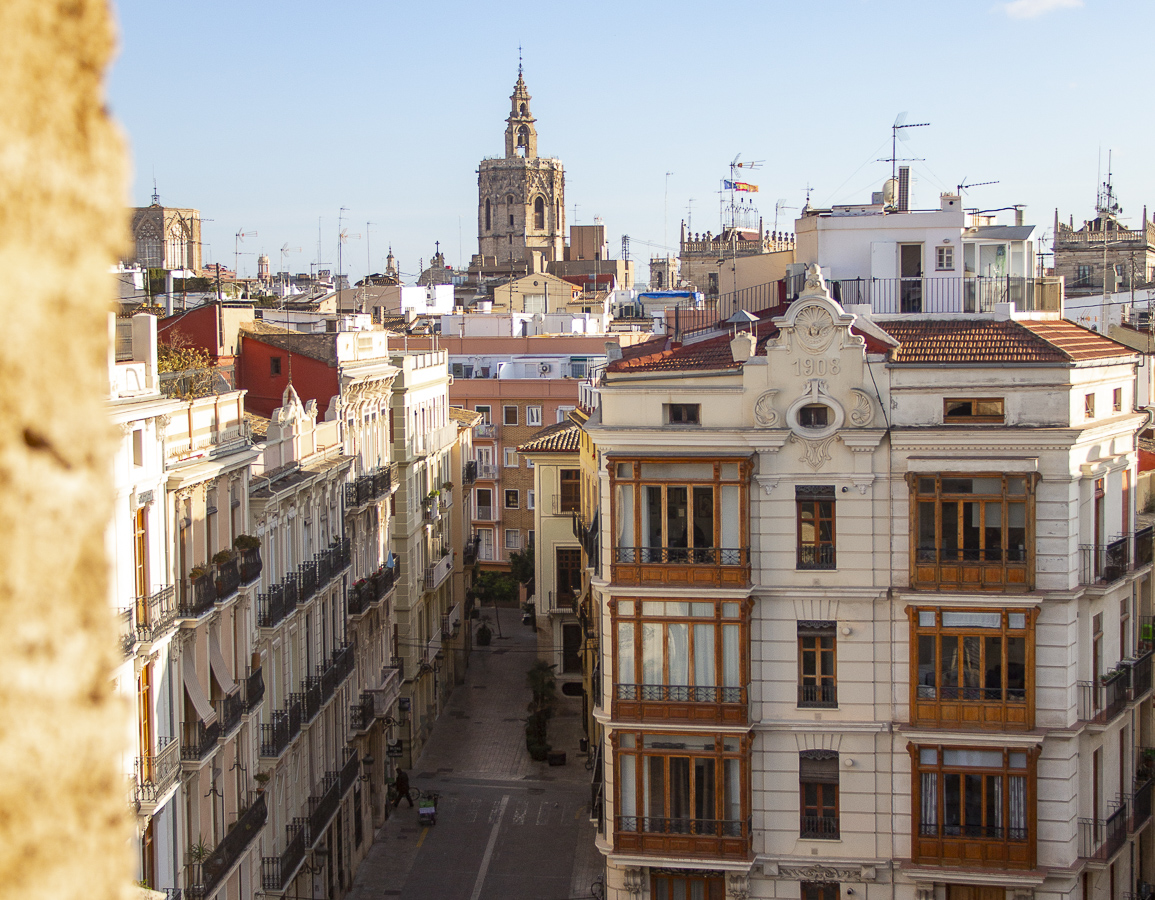
View from halfway up Torres de Serranos (Photo: Paul Stafford)
After the Balansiya Arabs came the Christian Reconquest, which not only reclaimed the city for the Spanish crown, but also left its own imprint on the skyline. El Carmen is fortunate to boast some of the best preserved sections of the medieval wall, built in the Gothic style, after the Reconquista, as it is known. Surviving sections of this defensive wall still feel completely impenetrable today. Nowhere does this feel truer than the Torres de Serranos and Torres de Quart, just two of an original 12 fortified gateways.
The thick, tall bulwarks enclose a relatively tiny gateway, which must have been quite the formidable entry point to the city. A weary traveller’s first impression of Valencia would have been El Carmen, once upon a time. It is possible to access and climb both sets of towers, with Serranos Towers offering a fantastic view over the city.
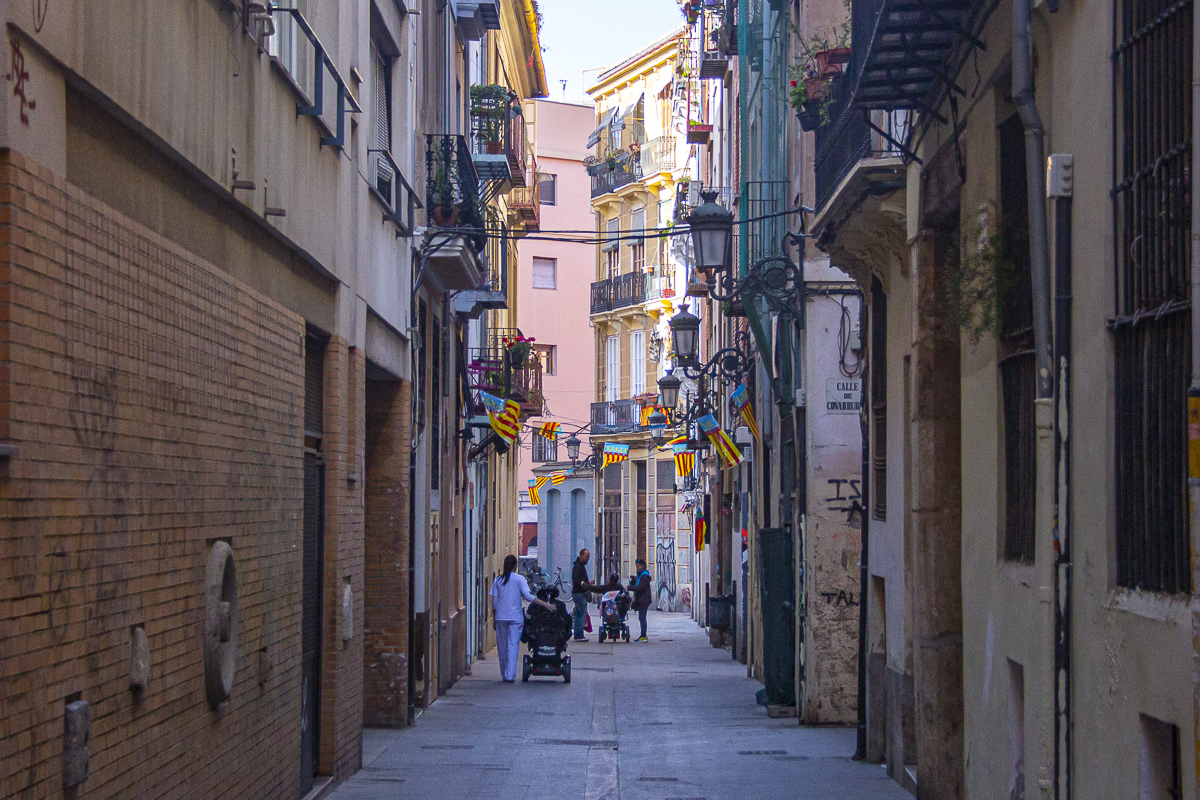
Narrow streets of El Carmen (Photo: Paul Stafford)
Green Belt
Skimming past the northern border of El Carmen is one of Valencia’s finest features: Turia Gardens. The 9-kilometre (5.6-mile) park is remarkable, filling what used to be a river’s basin (which was redirected after flooding one year), with orange and palm trees, flowers, paths and recreation facilities. Many people opt to hire bicycles for a few hours or a full day as the paths wind through the park and are unbroken by roads the entire way. Valencia Mania on Carrer de Salvador Giner is a good option for bike hire in Valencia’s El Carmen.
Turia Gardens start all the way out to the city’s northwest and wrap around the north of the historic centre, swinging towards the southeast and the City of Arts and Sciences. Within in easy reach of El Carmen on foot in Turia Gardens though is a series of pathways past fountains, sports pitches and along the small trickle of river that remains. You’re spoilt for choice in terms of places to have a picnic lunch here.
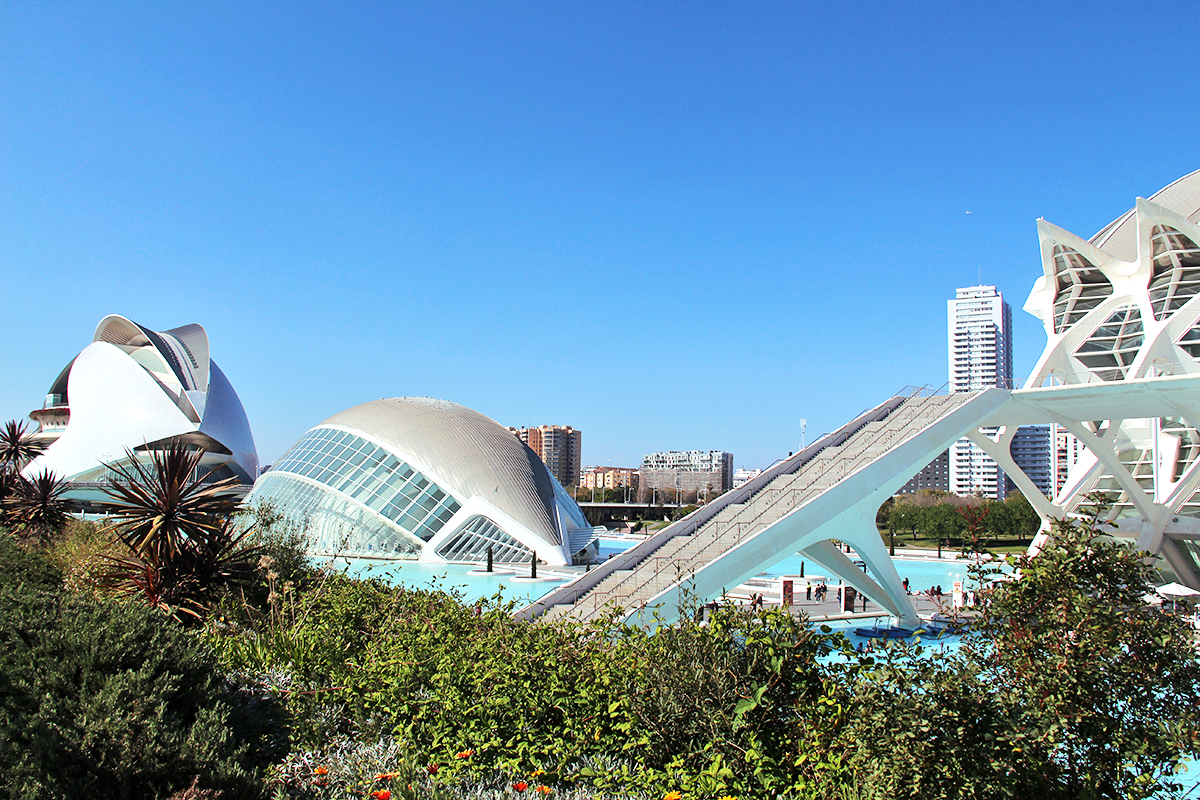
The City of Arts and Sciences from Turia Gardens (Photo: Paul Stafford)
Elsewhere in El Carmen, among the many noteworthy museums is the Prehistory Museum of Valencia, showcasing some of the artefacts unearthed in and around Valencia from Roman times all the way back to the Stone Age. Institut Valencià d’Art Modern showcases the best in contemporary art from Spain and from other artists worldwide.
Accommodation
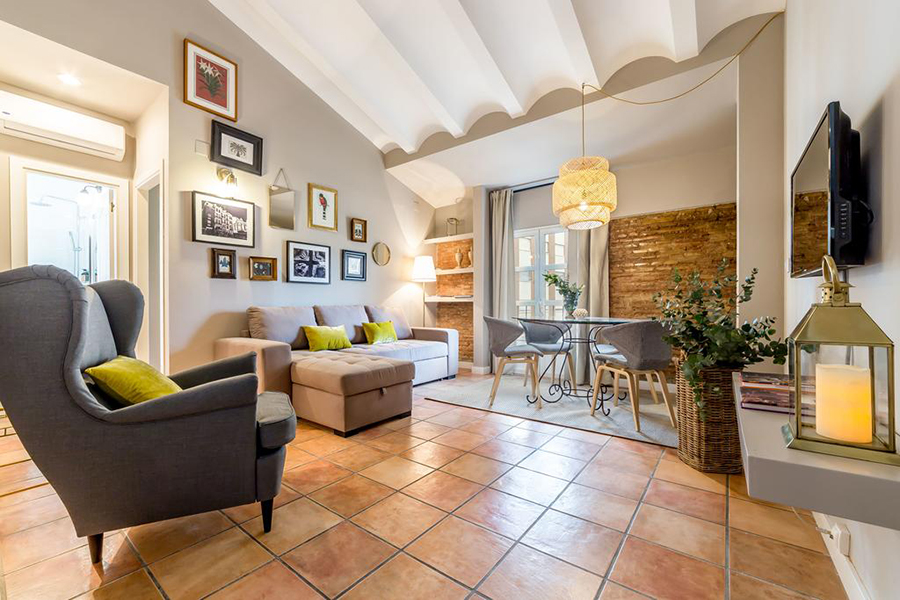
Classy decor at Palacio de Rojas (Photo: Courtesy of Palacio de Rojas)
One of the perks of being in the historic centre of a storied city is that many of the finer hotels are located in tastefully maintained old buildings. The 19th-century Palacio de Rojas (Carrer de Quart, 10) is a fine example of this. The décor combines modern furnishings with original features, like the brick walls, integrated into the design. The hotel only offers apartments and duplexes for up to nine people. The apartments are plush, and contain, among other things, a kitchenette, private bathroom, living area with a sofa bed, and many have balconies with city views.
Ad Hoc Carmen (Carrer de Samaniego, 20) is another good historic hotel with more modest rooms making for a better budget stay. The original building dates back to the 15th century, with major updates in the 17th and 19th centuries and that mix of eras can be seen, particularly from the outside. Rooms are air conditioned, and some have a private balcony. Space is more limited here, however there is a good range of options, including single rooms, as well as a family duplex with four single beds.
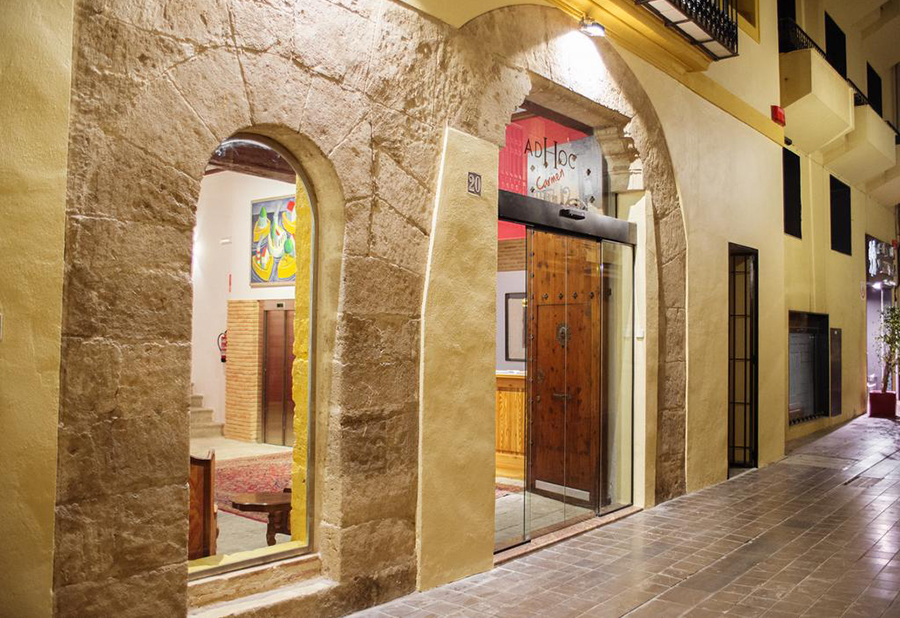
Ad Hoc Carmen Hotel (Photo: Courtesy of Ad Hoc Hotels)
At the other end of the scale, it might come as a surprise that there are few out-and-out hostels in Valencia, and El Carmen is no different. One of the best budget options though is Innsa (Carrer de Baix, 48), which has simple private double, twin or triple rooms which are either ensuite or with shared bathrooms. The hostel vibe is provided by the on-site bar, which is great for meeting fellow travellers, although perhaps not ideal for lighter sleepers.
Restaurants, tapas bars & cafés
Tapas, beer, sangria and coffee are in ready supply throughout Valencia’s El Carmen district, and you will find all three on offer at the excellent Café Museu (Carrer de Museu, 7), where you can pick up a light bite, such as a thick wedge of tortilla, or a plate of Manchego cheese and cured ham with a basket of bread, or combine various tapas to complete a meal. Draught beer is of the crafty variety, or you can simply sit in their al fresco seating area with a cortado coffee, reading a book as city life hums on.
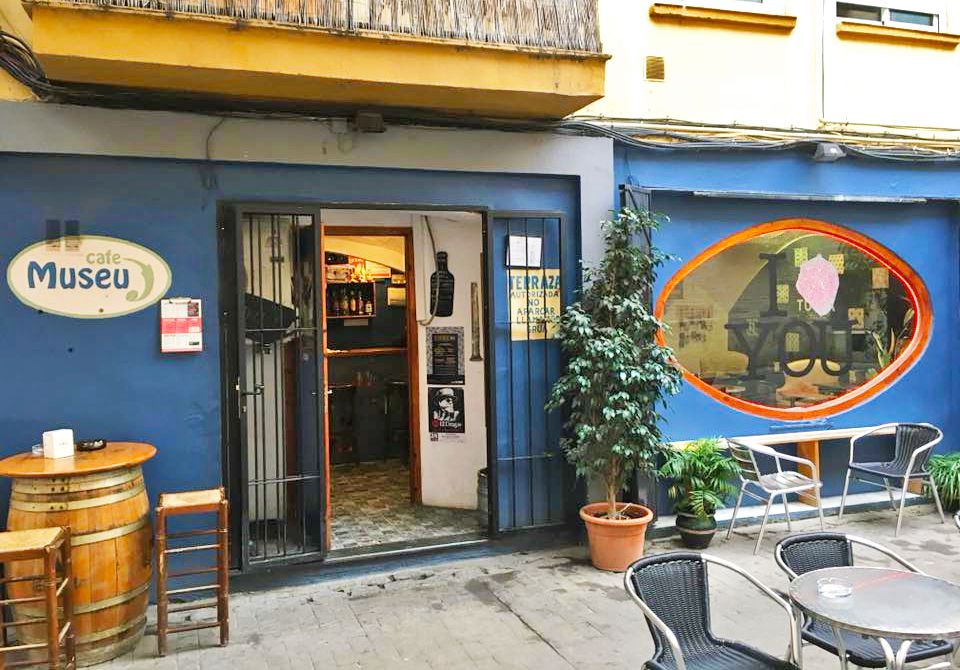
The front of Cafe Museu (Photo: Courtesy of Cafe Museu)
Fresh fish is the central culinary theme to Bar Richard (Carrer de Pinzón, 9), with fried anchovies, squid, seasoned whole shrimp, and platters of shellfish some of the perennial menu items. Vegetarian side dishes like fried artichoke hearts and Padrón peppers are also readily available. Drinking options are slightly more limited to bottled beer and good wines.
If you’re looking for excellent patatas bravas (and let’s be honest, who isn’t?) then one option is Arandinos Tapas Valencia (Plaça de l’Àngel). While there’s plenty to keep meat eaters happy, vegetarians need an Arandinos every now and then, particularly in Valencia, that has a decent selection of plant-based tapas on offer. From goats’ cheese salads and chunks of chorizo to deep fried squid and grilled mushrooms, there’s plenty of choice, to be washed down with mugs of sangria or a pint of beer. Weekends can get a little hectic and some of the meat options tend to run out well before midnight.
Many people in Valencia head out for dinner later at night than in other nations. Eight in the evening would be considered quite early. La Vaca Verde (Plaça de Mossèn Sorell, 11) caters very much to the late night dining crowd, opening late and closing after midnight from Monday to Saturday. Bacadillos (sandwiches) and burgers take up most space on the menu, along with tapas classics like Russian salad, Manchego cheese and anchovies. Drinks-wise, cocktails, regional white wine and beer are the popular choices.
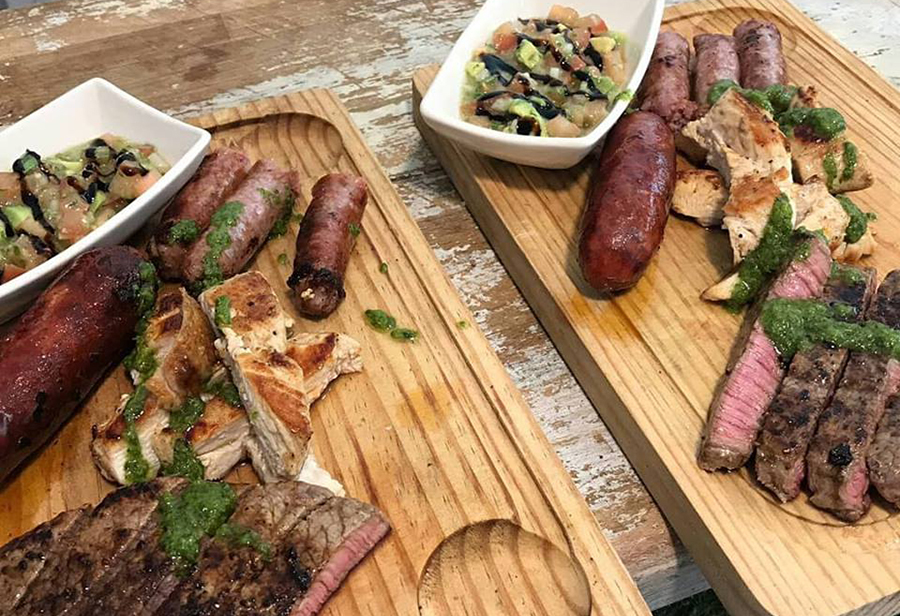
Meat platter at La Vaca Verde (Photo: Courtesy of La Vaca Verde)
Shopping
With its succulents and black- and white-tiled floors, trendy pÁngala (c/ NaJordana 2, chaflán) specialises in shoulder bags and smaller backpacks. The owner’s uniquely designed pieces tend to be made in small batches, and once they’re gone, they’re replaced by new designs. Prices are surprisingly reasonable. Bags are usually made using light, robust materials like a treated type of washable paper. Besides bags there are accessories like wallets and purses for sale.
El Carmen is Valencia’s main central area in which to find vintage clothing stores. A handful are clustered around carrers Dalt and Baix, the foremost of which is Santo Spirito Vintage (Carrer de Dalt, 22), which captures the upper, trendier end of the vintage market with recognisable brands like Levis, Adidas and Dior, along with home-grown brands. Santo Spirito is also a great place to find an unusual pair of sunglasses for completing that retro-hipster look.
Mercado de Tapinera (Carrer de la Tapinera, 15) doesn’t really belong in any one category but could also fit into all of them. The market’s shopping section, aptly known as Ephemeral Stores, are a rotating selection of three separate pop-up shops that could sell most anything, often erring towards the handmade and decorative. There is also an event space and two restaurants on site, all of which operate throughout the year, so it’s well worth dropping by.
Paella
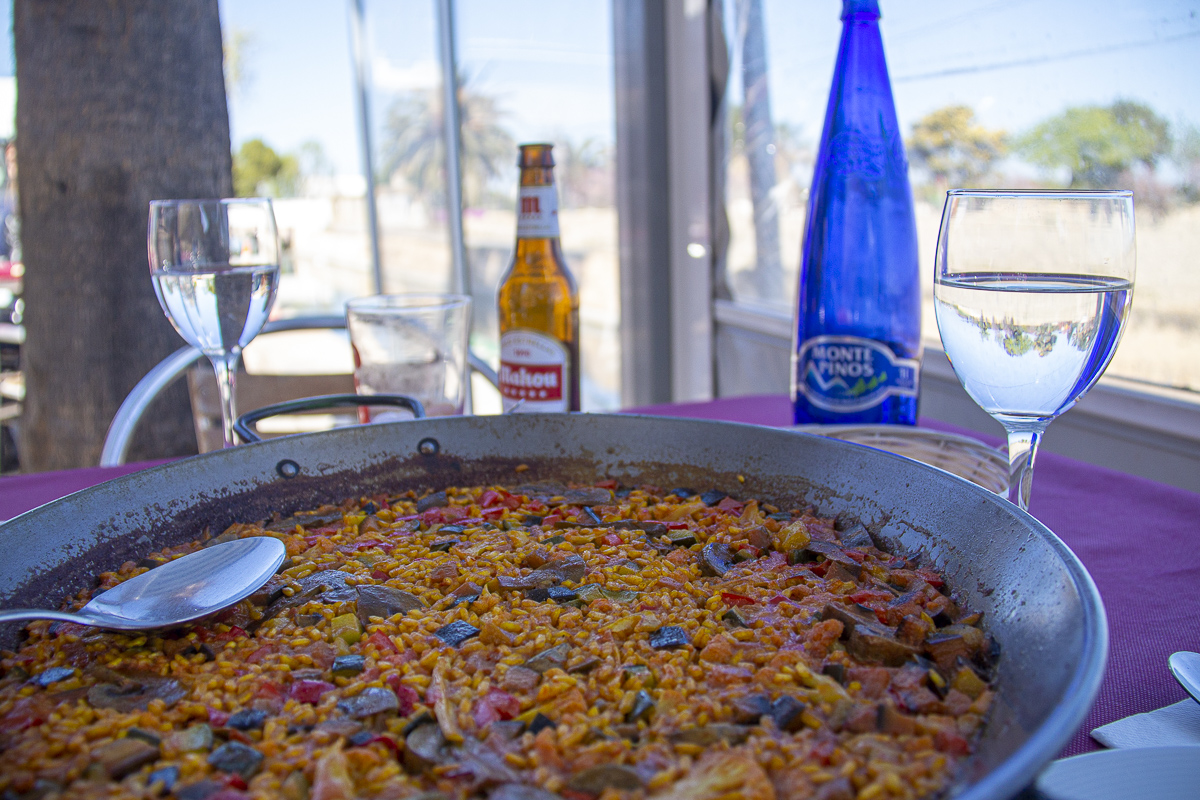
A big dish of vegetable paella (Photo: Paul Stafford)
While many people insist that paella, one of Spain’s most iconic dishes, hails from Valencia, its origins lie 20km (12.4 miles) to the south of Valencia in El Palmar, a small rice farming and fishing town. A trip there is possible by taking bus 25 from Valencia, but the city is considered the dish’s spiritual home and you don’t need to go all the way there to have a good paella experience. The down-side for Valencia is that tourism has led to a profusion of bad imitators and pre-cooked paella that do not do justice to the dish. Here are some of the best places to try paella in Valencia’s El Carmen district.
Restaurante Yuso (Carrer de la Creu, 4) is notable for its mix of tapas, including the classics like patatas bravas, fried calamari and thin slices of Iberian ham. But it’s their range of paella dishes that draws many people to this homey spot. You might even get the opportunity to learn how traditional paella is made. As with all restaurants listed here, expect wait times of around 45 minutes for freshly-made paella. Most restaurants will not serve it up to less than two people due to the preparation time and the size of the shallow, enamelled steel pans customarily used.
With modern décor and more of a fine dining vibe, the presentation at La Cigrona (Carrer dels Serrans, 22) alone is worth the trip for those who enjoy their food and art combined. With an excellent menu that denotes very specific dietary information about each dish, La Cigrona offers four types of paella: vegetable, senyoret (with fish and seafood), beef steak and pumpkin, and the classic paella valenciana (with vegetables, chicken and rabbit).
Less than a minute from the Torres de Quart, Restaurante Canela (Carrer de Quart, 49) is a small, cosy restaurant with modern décor that is pared back in places to show exposed sections of the building’s original brickwork and wooden roof beams. Food is carefully prepared here, and the menu is curated to include a fine balance between the expected and unexpected. Therefore, you’ll find versions of paella that include the classic valenciana or black rice with squid, and more unusual pairings like cabbage and cod, or lobster and artichoke.
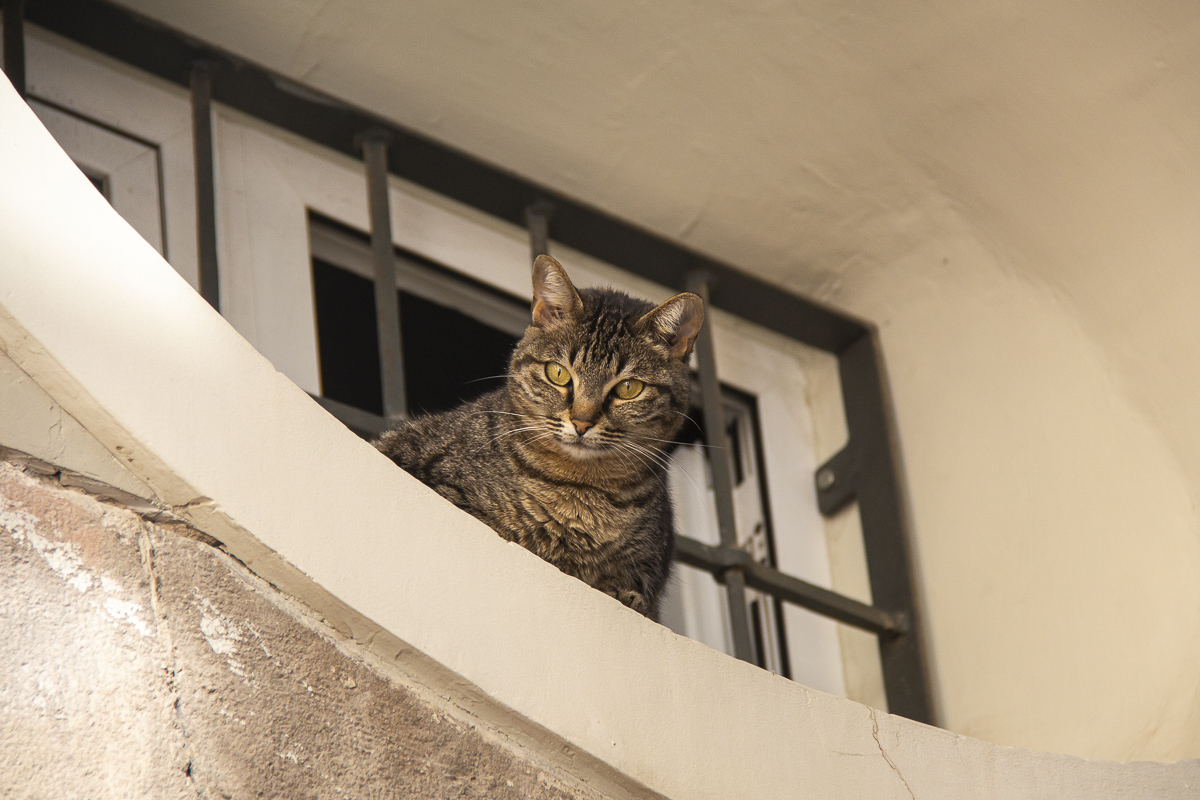
El Carmen cat (Photo: Paul Stafford)